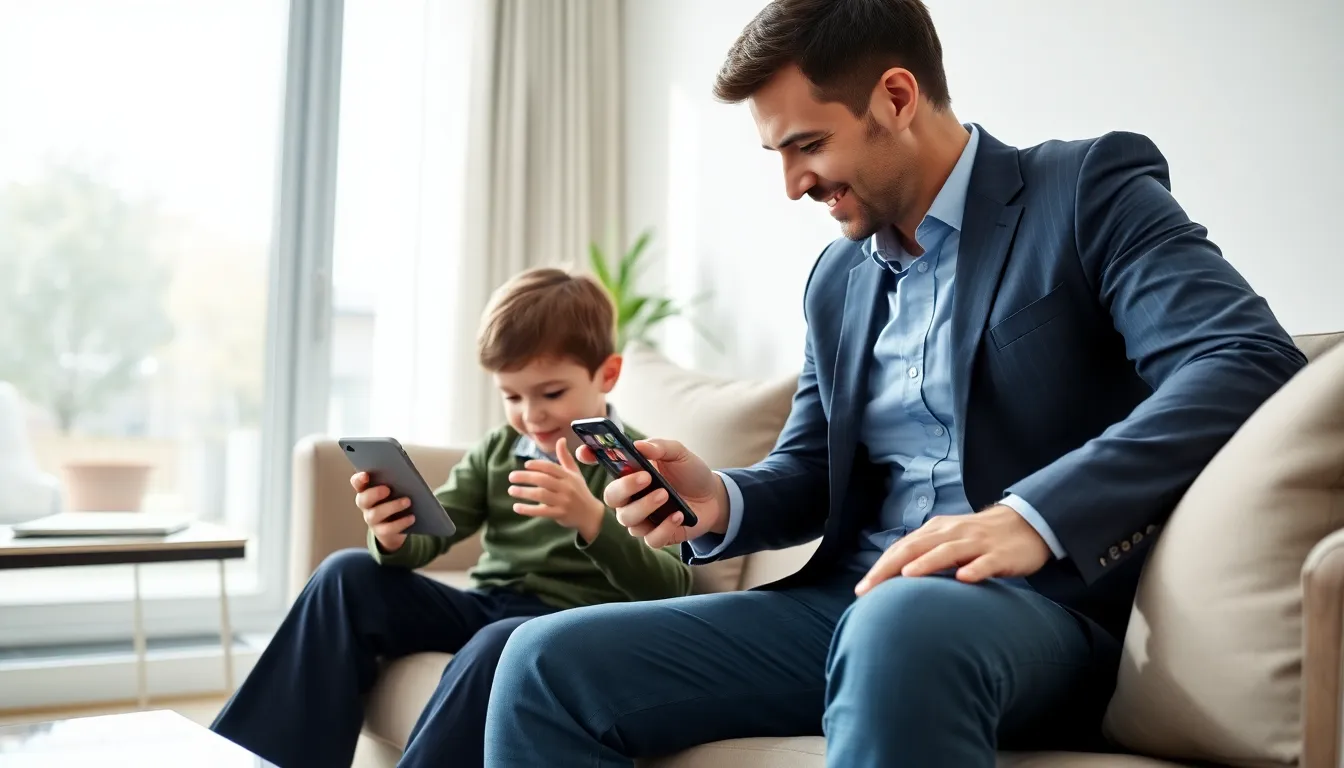In a world where smartphones are as common as morning coffee, navigating parental controls can feel like deciphering hieroglyphics. But fear not, for the iPhone’s parental settings are designed to help you protect your littles from digital mishaps while keeping their tech experience enjoyable. Whether you’re worried about screen time turning into screen addiction or you simply want to ensure that your child isn’t purchasing a lifetime supply of llama stickers without your knowledge, this guide has got you covered. Buckle up as we jump into the nitty-gritty of parental settings on iPhone, blending humor with savvy parental strategies.
Table of Contents
ToggleUnderstanding Parental Controls

Parental controls are like digital seatbelts: they provide safety without constricting freedom. The iPhone comes equipped with a variety of features designed to help parents manage how their kids interact with their devices. From screen time limits to content restrictions, these tools empower parents to set boundaries and create a safer digital environment. But before jumping into setting up those controls, it’s crucial to understand them. Parental controls are not just about restricting access, they’re about fostering responsible usage that promotes healthy habits. Knowing what settings are available helps parents tailor the environment to their family’s specific needs.
Setting Up Screen Time
Have you ever tried to pry a device from your child’s sticky fingers? It’s a battle for the ages. Thankfully, the Screen Time feature can put you back in the driver’s seat. To set it up, head to the Settings app and tap on “Screen Time.” Here, you’ll be greeted with options galore. You can set daily limits for specific apps or categories, ensuring that your young scholars aren’t just playing games instead of doing assignments.
If you’ve got tweens or teens, you can even monitor their usage. You’ll receive weekly reports showing how much time they spend on social media or gaming apps. Plus, with the “Downtime” feature, you can schedule times when the device becomes virtually useless, perfect for ensuring that family dinner isn’t disrupted by a loud app notification.
Overall, Screen Time is about empowering you to create a balanced relationship between technology and daily life.
Content Restrictions for Apps and Media
Content restrictions go a long way in protecting your children from adult themes and inappropriate material. Once again, the iPhone steps up its game. Within Screen Time settings, you’ll find the “Content & Privacy Restrictions” option. This is where you can customize what types of content your child can access.
Managing Privacy Settings
One feature that stands out is the ability to manage privacy settings. You can restrict changes to privacy settings, including location, contacts, and calendars. This ensures that kids can’t easily alter these settings to override parental restrictions.
Limiting In-App Purchases
Also, disabling in-app purchases can save your wallet from the wrath of surprise charges. Let’s face it, most kids don’t know the value of a dollar and might be tempted to spend money like it’s second nature. By toggling off in-app purchases, you prevent any unwanted transactions.
Enabling Location Services Restrictions
Location services are super handy for navigation and finding lost devices, but they can also pose risks in the wrong hands. To protect your child’s location data, you can limit location services through the same restrictions menu. You’ll want to choose which apps can access location information.
For instance, it might be wise to allow location access for family tracking apps but restrict it for less interactive games that have no need to know where your child is at any given time. These restrictions also come in handy if your child has a habit of sharing their location on social media. Teaching them to manage their digital footprint will empower them in their online interactions.
Best Practices for Using Parental Controls
Just setting up parental controls isn’t enough: best practices enhance their effectiveness. Engage in Open Conversations: Discuss the use of these features with your kids. Explain that it’s about safety, not just about policing them. Adjust Settings Regularly: As your kids grow and their needs change, revisit the iPhone’s settings to keep them appropriate. What worked for a nine-year-old might not suit a teenager. Be a Tech Role Model: Your own tech habits matter. Show them healthy screen time behaviors to encourage similar habits. Eventually, these tools should be part of a broader dialogue about responsible digital engagement.



